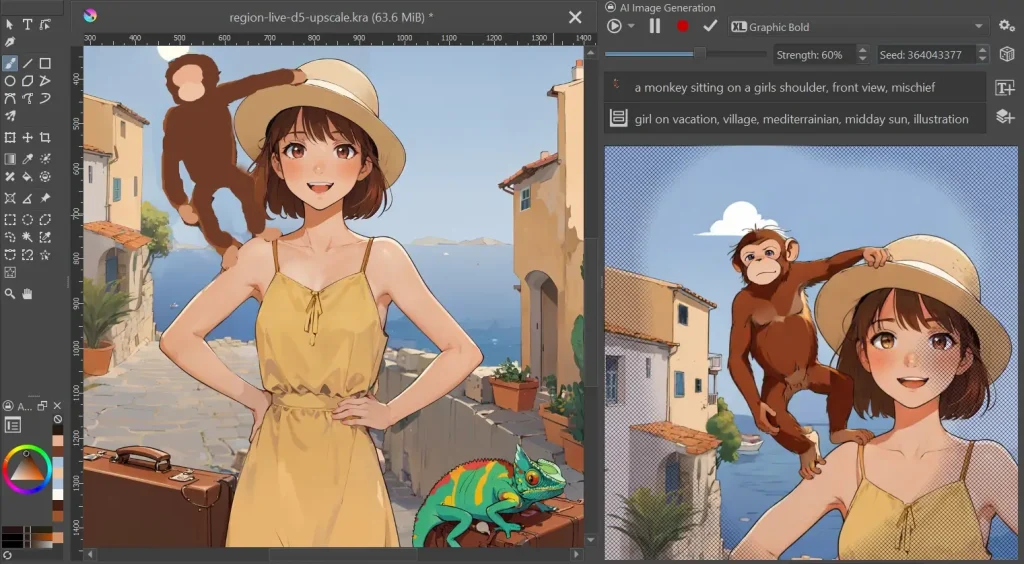
Imagine standing in front of a blank canvas, brush in hand—except this time, you’re not alone. An AI whispers suggestions in your ear, offering color palettes, brushstroke techniques, or even wild, unexpected compositions. It’s not about replacing the artist. It’s about collaboration. And honestly? The results can be breathtaking.
How AI Is Changing the Painting Process
Gone are the days when AI was just a tool for automating tedious tasks. Today, it’s a creative partner. Here’s how:
- Inspiration on demand: Stuck in a creative rut? AI can generate dozens of concept sketches in seconds, sparking ideas you might never have considered.
- Technical assistance: Struggling with perspective or lighting? AI can analyze your work and suggest adjustments—like a digital mentor.
- Style blending: Want to merge Van Gogh’s swirls with cyberpunk neon? AI can help bridge the gap between styles seamlessly.
That said, it’s not all smooth sailing. Some artists worry about losing their “voice” or becoming too reliant on algorithms. But here’s the deal: AI doesn’t replace creativity—it amplifies it.
Real-World Examples of AI and Artists Working Together
Let’s look at a few cases where AI-assisted painting led to something extraordinary:
| Project | Artist | AI’s Role |
| “Portrait of Edmond de Belamy” | Obvious Collective | AI generated the entire painting, trained on historical portraits |
| “The Next Rembrandt” | Microsoft & J. Walter Thompson | AI analyzed Rembrandt’s works to create a new “original” |
| Refik Anadol’s Digital Art | Refik Anadol | AI processes vast datasets to create immersive, evolving visuals |
These projects blur the line between tool and collaborator—and honestly, that’s where things get interesting.
The Psychology of Creative Collaboration with AI
Working with AI isn’t just about the output. It changes how we think about art. Some artists report:
- A sense of playful experimentation (“What if we try this?”)
- Reduced fear of mistakes (AI doesn’t judge)
- Faster iteration cycles (no waiting for paint to dry)
But—and this is crucial—it requires a shift in mindset. You’re not just giving commands. You’re in a dialogue.
When AI Surprises You
Here’s a funny thing: sometimes, the AI suggests something utterly bizarre… and it works. A misplaced brushstroke becomes a focal point. A “wrong” color somehow sings. That’s the magic of collaboration—the unexpected twists.
Tools for AI-Assisted Painting (And How to Choose One)
Not all AI art tools are created equal. Here’s a quick rundown of popular options:
- Runway ML: Great for real-time collaboration, with models for style transfer and more.
- Adobe Firefly: Integrates with Photoshop, making it ideal for digital painters.
- Deep Dream Generator: A classic for surreal, dreamlike transformations.
- Artbreeder: Lets you “breed” images to create hybrid styles.
Your choice depends on your workflow. Prefer tactile feedback? Look for tools that work with tablets or even AR brushes. Love chaos? Opt for generative models that thrive on randomness.
Ethical Considerations—Because They Matter
Sure, AI-assisted painting is exciting. But let’s not ignore the thorny questions:
- Originality: Who “owns” the art—the artist, the AI, or the dataset creators?
- Bias: If an AI is trained on Western art, will it struggle with other traditions?
- Over-reliance: Are we risking a generation of artists who can’t paint without algorithms?
Where Do We Go From Here?
AI-assisted painting isn’t a trend—it’s a paradigm shift. The artists who thrive will be those who embrace the collaboration, quirks and all. Not as masters of the tool, but as partners in the creative dance.
So, pick up that brush. Or that stylus. Or that neural network. The canvas is waiting.






